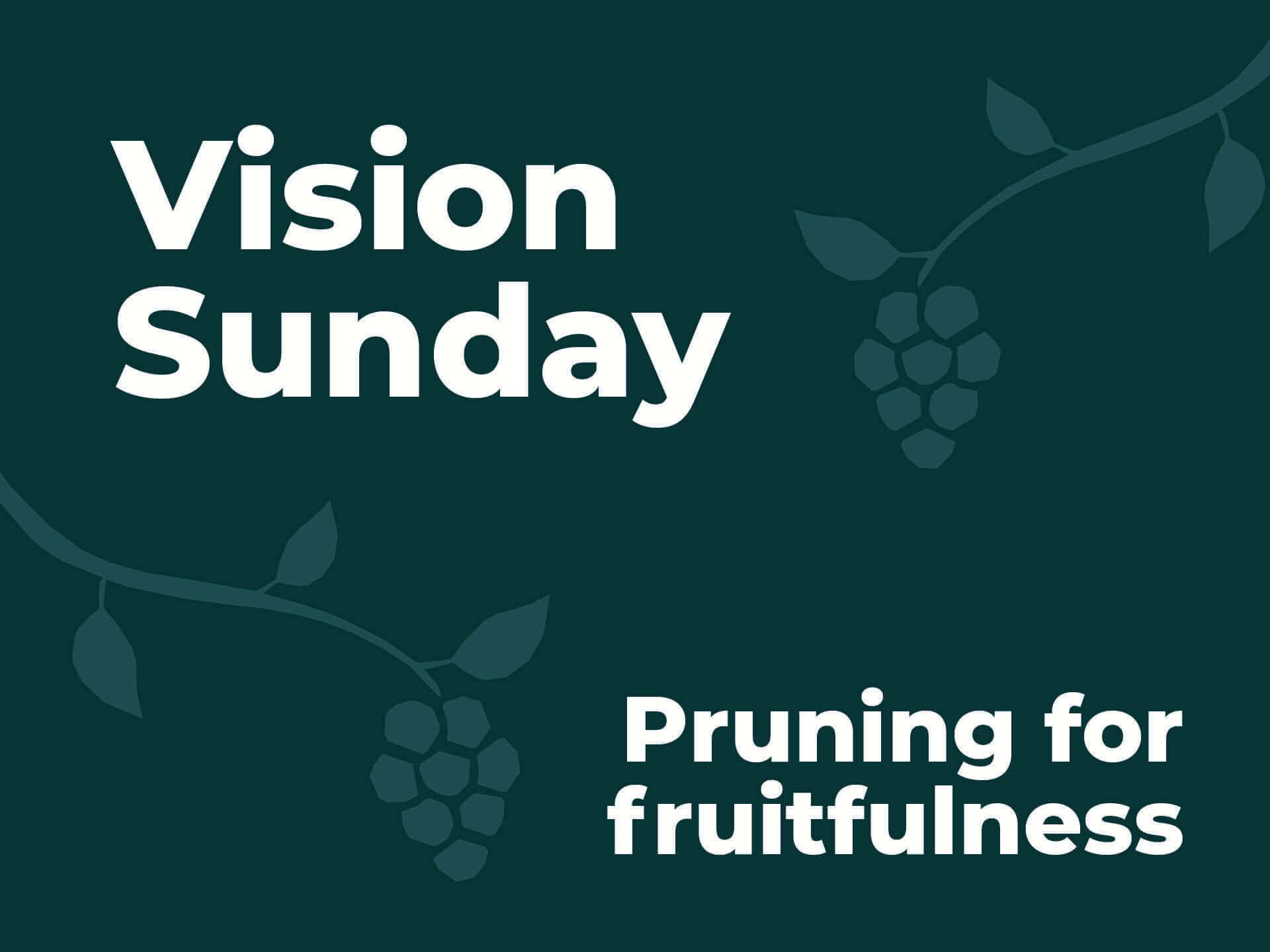The Gardener
About this series
At the start of 2022 Russ, our Lead Elder, spoke about this being a year of ‘pruning for fruitfulness.’ The imagery comes from John 15 so we are going to preach through this chapter over seven Sundays.
The vine and branches are a wonderful and inspiring image but comes at a very intense point in Jesus’ journey to the cross.
There is also a clear Old Testament connection. In the OT “the vine” or “the vineyard” was a common picture of God’s people, and a symbol of the fruitfulness God intended for them. God had done all that was necessary for his people to be fruitful - chosen them, loved them, planted them in ‘fertile’ conditions - yet they continually turned away from him, and failed to be a prophetic witness to the nations of the one true God.
Fast-forward to John’s gospel where Jesus says, “I am the true vine” - I am the truly fruitful one sent by my Father, who himself is the gardener; stay intimately connected to me and dependent on me; your fruitfulness is directly related to that connection. It is by remaining in me that you will be enabled to be the distinct and faithful people of God and a prophetic witness of him.
We have a danger of immediately thinking of fruitfulness in terms of output, usefulness, and productivity - which is certainly part of what it means to be fruitful. But fruitfulness for God is the result of a life rooted in faithfulness to him. That is surely why God’s people produced bad fruit throughout the OT - because they had been unfaithful. Bearing good fruit is a matter of growth in godliness and character; it’s a holiness question as much as a usefulness one.
This series about abiding is not a set of seven ways to be fruitful but is a careful study in John 15. However, we hope that it is extremely practical, with the thread of abiding (as the way to be fruitful) weaving through it all. Each part of the series should help us consider how we can abide in Jesus.
For example:
Through staying conscious of him at all times
Submitting our decisions to him
Keeping his glory as the goal
Connecting to fellow believers
Ensuring that we’re carving out time to be alone with him in personal devotions (prayer, Bible reading, worship, etc)
Growing in our understanding of who he is and who we are in him.
About this talk
Scripture: John 15:1b
This is the only “I am” saying where Jesus also states who God the Father is within the same imagery - the gardener. Though the focus of the extended metaphor is Jesus, the Father is not incidental to it - it is he who “cuts off every branch in me that bears no fruit, while every branch that does bear fruit he prunes so that it will be even more fruitful” (v 2); the goal is the Father’s glory (v 8), and the Father’s love is central (v9).
Jesus calls God his Father frequently - four times in this passage and 32 times in total in John (eg. 2:15; 5:16; 10:17). He is describing the uniqueness of his relationship with God - he is uniquely the Father’s Son. But wonderfully, he then brings his disciples into that Father-son relationship by virtue of adoption into his family. The very same God is our Father! When Jesus appears to Mary Magdalene after his resurrection, he says to her, “Do not hold on to me, for I have not yet ascended to the Father. Go instead to my brothers and tell them, ‘I am ascending to my Father and your Father, to my God and your God” (John 20:17). While he is the unique Son, we are all sons and daughters of the same Father.
In OT references Israel being God’s vineyard, it is God himself who planted and cared for it. And here the Father is described as the gardener (a Greek word meaning farmer generally and vinedresser specifically in this context). The beauty of the Trinity’s work in our lives is explained at different times as being the work of the Father (here), the Son (eg. Matthew 28:20), and the Holy Spirit (see John 14 & 16). They are so one and united that they are all at work in our lives, but here it is the Father who is said to be tending to the branches of the vines. How he does that - by removing dead wood and pruning healthy branches - will be described in v 2.
We look at:
How does this term - gardener - fit with other terms used to describe God throughout the Bible?
What images and ideas does God as the gardener bring to mind? What does a gardener or vinedresser actually do?
If the Father is the gardener, he is the owner of the vineyard and the one whose reputation is bound up with the vineyard. How do we abide in such a way that he remains our focus and whose glory we seek?








